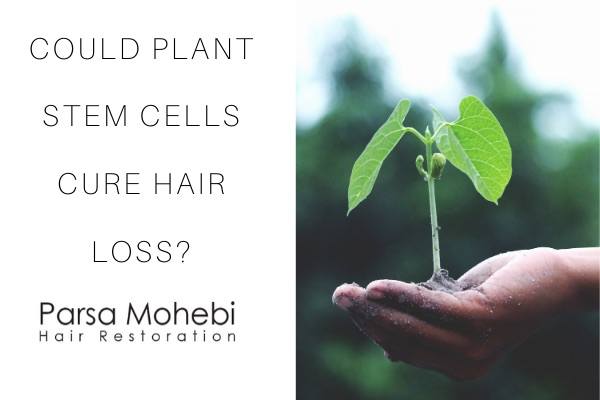Could Plant Stem Cells Cure Hair Loss? – Scientific Study

Why are we so attracted to products and treatments that contain the words ‘organic’, ‘natural’, etc.? In recent years, consumers have become more aware of both (1) the effects we have on the environment by using certain products, as well as (2) the benefits natural, organic products have on our body – especially in health-conscious cities like our very own Los Angeles.
When it comes to the hair restoration industry, consumers have begun to feel the same way about using natural, environmentally-friendly options. As a result, health and eco-conscious consumers look for alternatives to chemicals like Minoxidil, which is not as appealing as say, ‘natural, organic hair loss cure’. But, is there an all-natural cure or treatment for hair loss? And if so, does it really work? At Parsa Mohebi Hair Restoration, it is our mission to evaluate the scientific research and evidence so we can answer these questions and give you the facts!
Scientific Study: Shikimic acid, a mannose bioisostere, promotes hair growth with the induction of anagen hair cycle
As the popularity of holistic and over-the-counter treatments for hair loss continues to skyrocket, scientists and researchers continue to search for the next advancement in treating hair loss. Of course, bonus points if the treatment is non-invasive and/or more environmentally-friendly. A recent study we came across shows hope of achieving this:
A recent study was performed to investigate the effects that a naturally-occurring substance, Shikimic Acid (SA), had on hair growth. According to Wikipedia, Shikimic Acid (SA), “more commonly known as its anionic form shikimate, is a cyclohexene, a cyclitol and a cyclohexanecarboxylic acid. It is an important biochemical metabolite in plants and microorganisms. Its name comes from the Japanese flower shikimi” It was also recently discovered that Shikimic acid (SA) is a major component of plant stem cells. Although the exact effects of SA on human hair follicles (HFs) are currently unknown, it could be a huge breakthrough for providing natural solutions for hair restoration.
Study Findings
The study used mice as test subjects to investigate the effect of SA, using an in vivo model. What the experiment found out was very interesting – Shikimic Acid (SA) significantly prolonged anagen hair growth in mice, which confirmed the expression of the mannose receptor in human hair follicles. Also, SA increased the proliferation of human dermal papilla cells and outer root sheath cells. Furthermore, it was found that “SA enhanced hair shaft elongation in an ex vivo human hair organ culture. SA treatment of human dermal papilla cells led to increased c-myc, hepatocyte growth factor, keratinocyte growth factor and vascular endothelial growth factor levels and up-regulation of p38 MAPK and cAMP response element-binding protein levels.” – all of which supports the hypothesis that SA could help promote hair growth. Finally, the study showed that SA promotes hair growth and may serve as a new therapeutic agent in the treatment of alopecia.
Summary
So, could Shikimic Acid (SA) be the future of all-natural hair restoration? Although the study shows great promise that it indeed could be, further studies would need to be conducted to confirm. That being said, the study does confirm that using plant stem cells shows promise for treating hair loss and warrants further research. Even better, the study showed that SA could also be an alternative treatment for alopecia, which could benefit millions of people in years to come.